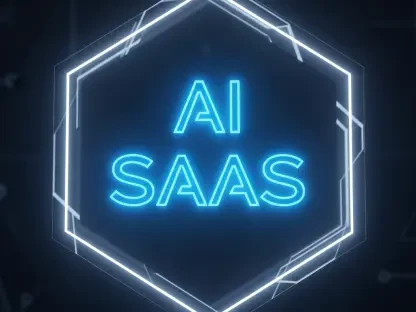Introduction to CrowdStrike Threat AI Review
Imagine a cyberattack unfolding in mere seconds, powered by artificial intelligence that outpaces human response times, leaving organizations vulnerable to devastating breaches, a reality of modern cybersecurity where the speed and sophistication of threats demand equally agile defenses. The purpose of this review is to evaluate CrowdStrike Threat AI, a pioneering agent-based threat intelligence system, and determine if it stands as a worthwhile investment for organizations battling these advanced challenges. This analysis will delve into how the technology addresses the critical need for rapid, precise threat response in an era of AI-driven attacks.
The scope of this assessment covers the system’s core functionalities, real-world performance, and overall value in enhancing cybersecurity frameworks. By examining its innovative approach to automating threat intelligence, the review aims to provide clarity on whether this solution can transform organizational defenses against an ever-evolving threat landscape. Readers will gain insights into how this tool fits into broader security strategies and whether it meets the pressing demands of today’s digital battleground.
Overview of CrowdStrike Threat AI Technology
CrowdStrike Threat AI emerges as the industry’s first agent-based threat intelligence system, designed to revolutionize how organizations detect and mitigate cyber risks. At its core, the technology employs intelligent agents such as the Malware Analysis Agent, which automates complex tasks like reverse engineering and classifying malicious code, and the Tracking Agent, which proactively scans networks for potential threats. These components work in tandem to deliver actionable insights at unprecedented speeds, setting a new standard for threat response.
Integration with CrowdStrike’s existing security modules enhances the system’s capabilities, ensuring seamless operation within established workflows. This synergy allows Threat AI to transform static threat intelligence into a dynamic, proactive tool that anticipates and counters risks before they escalate. Its role within the Agentic Security Workforce initiative underscores a strategic vision to embed AI deeply into cybersecurity operations, addressing the accelerated pace of modern attacks.
A distinguishing feature of this technology is its closed-loop scheduling system, where the output of one agent feeds into another, creating a cohesive and efficient threat mitigation process. By automating intricate workflows, the system not only boosts operational speed but also redefines the scope of threat intelligence as a frontline defense mechanism. This innovative architecture positions the solution as a critical asset for organizations seeking to stay ahead of adversaries.
Performance Evaluation of Threat AI in Real-World Scenarios
When tested in practical, high-stakes environments, CrowdStrike Threat AI demonstrates notable strengths in threat detection speed. The system’s ability to identify and analyze risks within seconds proves invaluable against AI-driven attacks that exploit narrow response windows. This rapid processing ensures that potential breaches are flagged and addressed before they can inflict significant damage, offering a crucial edge in dynamic threat scenarios.
Accuracy in insights and recommendations further bolsters the system’s effectiveness, with agents providing precise data on attack origins and mitigation strategies. Integration with existing cybersecurity infrastructures appears smooth in most cases, minimizing disruptions while enhancing overall defense mechanisms. However, performance can vary depending on the complexity of an organization’s systems, occasionally requiring tailored configurations to achieve optimal results.
The capacity to handle sophisticated, AI-powered threats stands out as a key advantage, particularly in environments where adversaries leverage advanced tactics. Operational efficiency sees a marked improvement as repetitive tasks are offloaded to automated agents, allowing security teams to focus on strategic priorities. While the system excels in many areas, its performance under extreme scalability demands or highly customized setups may warrant further evaluation to ensure consistent reliability.
Strengths and Weaknesses of CrowdStrike Threat AI
One of the primary strengths of this technology lies in its automation of mundane, time-consuming tasks such as malware analysis and threat scanning. By delegating these responsibilities to specialized agents, the system frees up security analysts to concentrate on critical investigative work, thereby enhancing productivity. This shift toward automation represents a significant leap in operational efficiency for cybersecurity teams.
Another advantage is the rapid response to sophisticated threats, enabled by real-time insights and actionable recommendations. The empowerment of analysts through streamlined workflows ensures that human expertise is applied where it matters most, strengthening overall defense postures. Such capabilities make the solution particularly appealing to organizations facing frequent or complex cyber risks.
On the downside, limitations in scalability may pose challenges for very large enterprises or those with highly specialized needs. Adapting the system to unique organizational environments could require additional resources or customization, potentially offsetting some efficiency gains. While these weaknesses are not universal, they highlight areas where careful consideration is needed to ensure alignment with specific security requirements.
Summary of Findings and Recommendation
CrowdStrike Threat AI presents a compelling case as a transformative tool in the realm of cybersecurity, with its agent-based approach delivering speed and precision in threat detection and response. Key observations from this review highlight the system’s robust performance in real-world conditions, seamless integration with broader security modules, and significant automation benefits. These factors collectively position it as a strong contender for enhancing organizational defenses.
Considering aspects like cost, organizational needs, and the evolving threat landscape, the recommendation is to view this technology as a valuable investment for most enterprises, particularly those facing frequent AI-driven attacks. Its ability to alleviate the burden on security teams while maintaining high accuracy in threat mitigation justifies the expenditure for many. However, potential adopters should weigh scalability constraints against their specific operational demands before committing.
The overall effectiveness of the system in countering modern cyber challenges is evident, making it a suitable choice for bolstering cybersecurity frameworks. Organizations with complex or highly customized environments are advised to conduct thorough testing to ensure compatibility. In summary, this solution offers substantial value for those prioritizing rapid, automated threat intelligence in their security arsenal.
Final Thoughts and Practical Advice
Reflecting on the broader cybersecurity landscape, CrowdStrike Threat AI carved a notable niche by addressing the urgent demand for automated, proactive threat intelligence during its evaluation period. Its innovative use of agent-based systems sets a benchmark for how technology can augment human expertise in defending against rapid, AI-driven attacks. This perspective underscores the growing importance of such tools in maintaining robust security postures.
For organizations contemplating adoption, large enterprises or those frequently targeted by sophisticated threats stand to gain the most from this technology. Practical advice includes factoring in implementation costs, which could be significant depending on existing infrastructure, and ensuring adequate training for staff to maximize the system’s benefits. Long-term scalability also emerges as a critical consideration, with a need to assess how well the solution can adapt to future growth or evolving risks.
Moving forward, potential adopters are encouraged to explore pilot programs or phased rollouts to mitigate risks associated with integration challenges. Engaging with vendor support to customize configurations for unique environments proves beneficial in past implementations. These actionable steps offer a pathway to harnessing the full potential of advanced threat intelligence, ensuring that defenses remain resilient against an ever-shifting cyber threat horizon.









